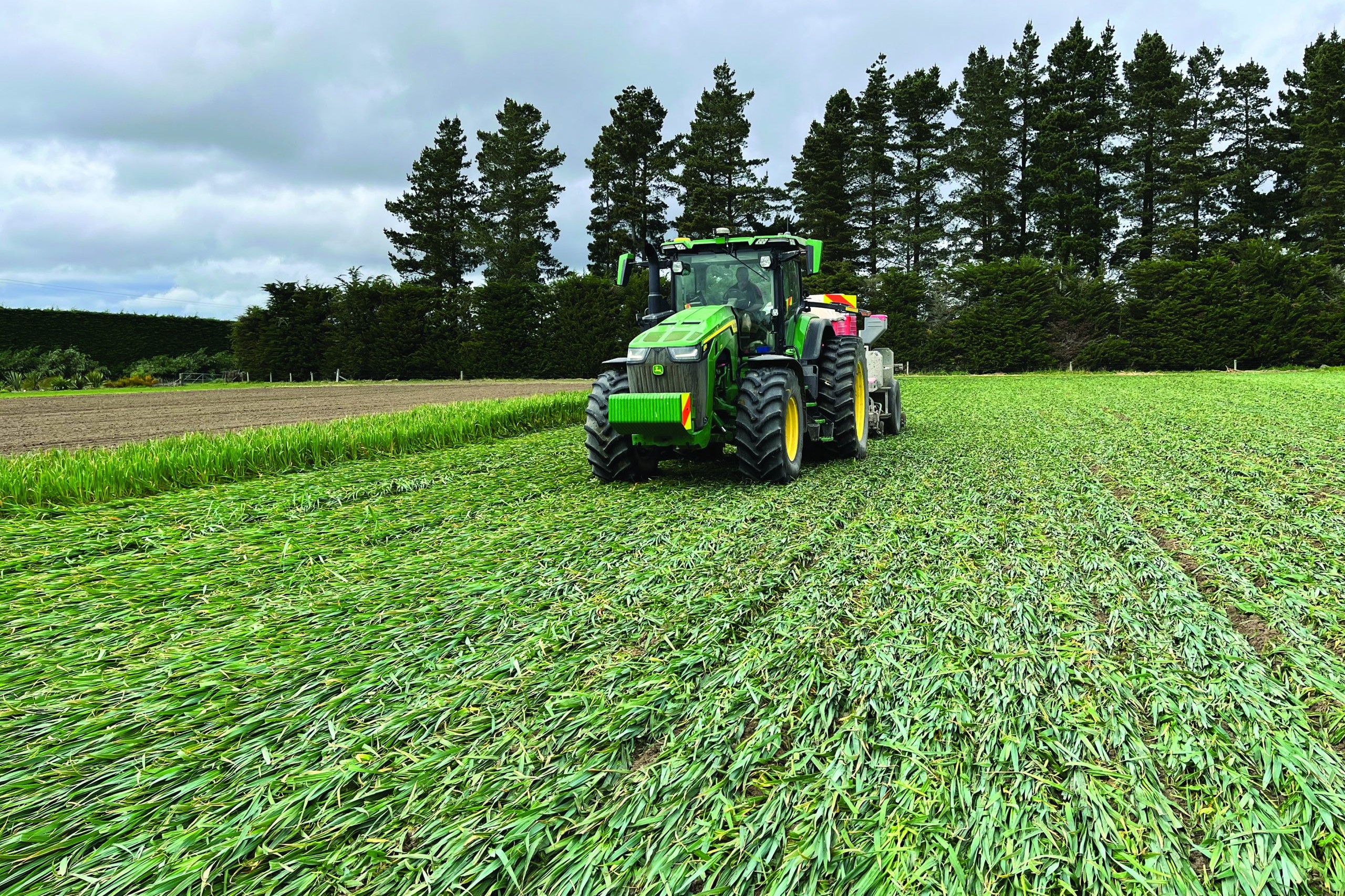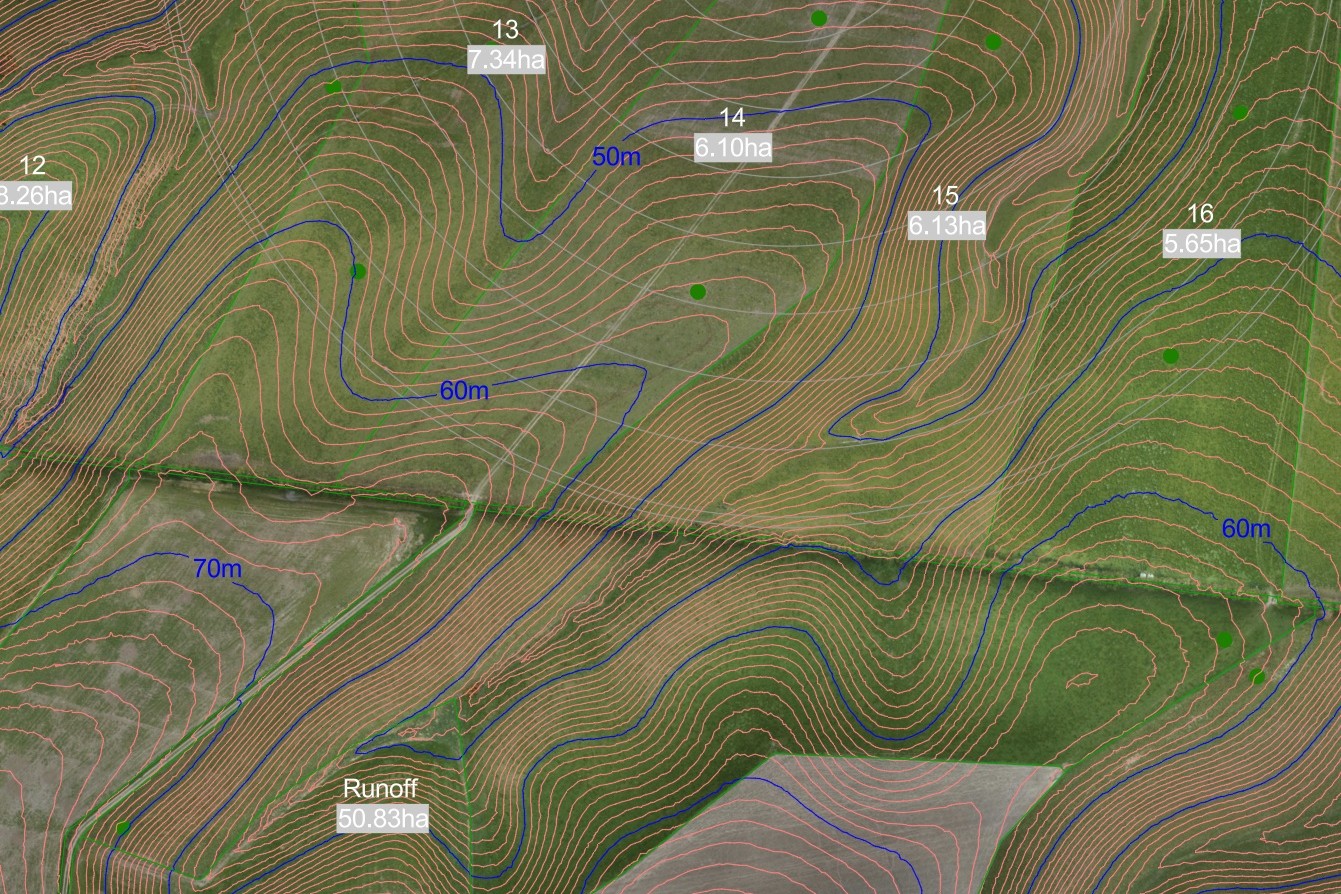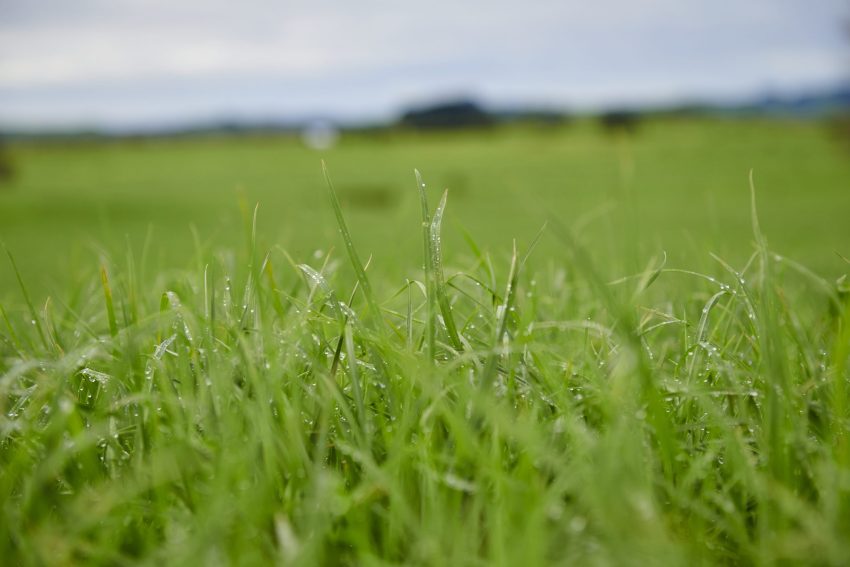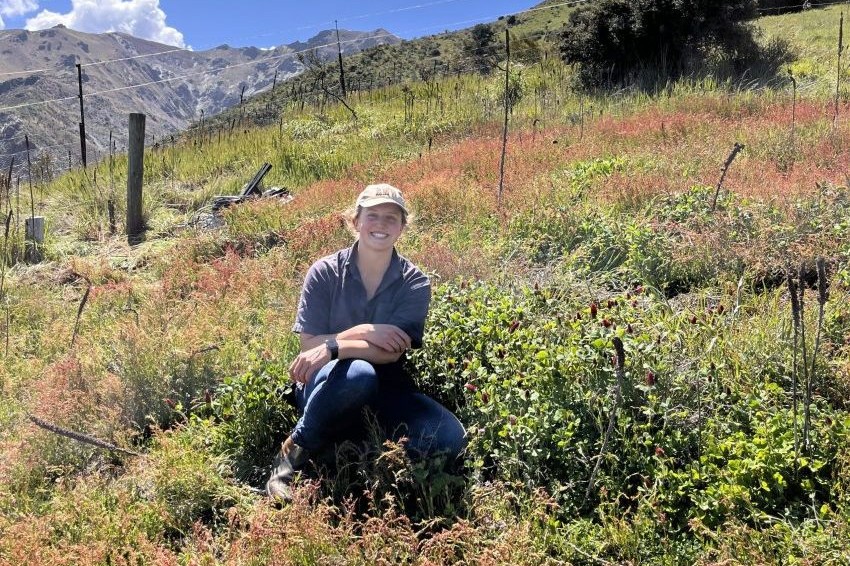Chertsey arable project a glimpse into future
A paddock in Mid Canterbury is providing a platform for the Foundation for Arable Research to offer a glimpse into the future of arable farming. Words Heather Chalmers.

Known as Future Farm Systems Demonstration, the project is comparing best practice conventional arable farming side-by-side with a more experimental future-focused approach. It is the first project of its type to be run by FAR and an opportunity for growers to evaluate practices such as direct drilling into a green crop and alternative crop protection at a field scale.
The trial is in the back paddock at FAR’s Chertsey Arable Research Site near Ashburton, with the 2.1-hectare site split into two areas, both 36m wide and 200m long with an irrigator running through the centre. The management of the two blocks is being decided by an advisory group of Canterbury growers, with technical support from FAR staff and agronomists.
FAR researcher Owen Gibson says that the seven-year project is a demonstration site and conversation starter for growers, showcasing some exciting new techniques and technologies as it progresses. Being long-term, it is able to encompass a full arable rotation.
“In arable farming systems, crops are not grown in isolation but are part of a wider rotation, which often includes livestock. A crop and how it is managed can have an impact on a following crop and this project will evaluate this. We are also using machinery and contractors that are commercially available rather than specialist trial plot tool services used elsewhere at the Chertsey research site. I would like to see how new technology can help farmers grow crops more efficiently with less inputs, while maintaining or potentially enhancing yield and soil quality.
We would like to see how far some current technology can help address issues such as herbicide resistance already seen on many New Zealand arable farms.”
The project is assessing the financial costs and returns, environmental effects and impact on soil and crop structure of the two systems.
A year since the start of the future-focused project, contrasting results are already being observed. This includes 100 kg/ha of soil nitrogen being recorded in May on the future-focused side, compared with about 20 kg/ha on the conventional block.
Owen attributes the difference to the mineralisation of pea vining residue retained on the future-focused block. Applied Trichoderma may have also boosted nodulation on the peas, increasing nitrogen-fixation and hence total nitrogen in the residue. This is a substantial amount of nitrogen retained in the system from the process pea crop for the developing wheat, amounting to a saving of
$170/ha of urea. “However, if we can’t utilise this nitrogen over winter there is the possibility of leaching N to groundwater, particularly if we have a wet winter.
Post-winter soil sampling in August will tell us a lot about how the season has affected the available mineral N in the future farm block and what is available in spring,” Owen says.
Differing management
In spring 2023, when the project started, the paddock was in oats.
While both blocks were then sown in process peas for Talley’s, management of each differed. The conventional side was grazed by R1 dairy heifers before being ploughed, disced and rolled for process peas and planted in early September 2023.
The future farm block retained the oat residue, which was sprayed and flat rolled, before direct drilling of peas to provide a thatch cover to decrease moisture loss and suppress weed germination. This resulted in reduced herbicide, machinery passes and increased soil structure.
A Trichoderma treatment was applied on the future side. Trichoderma are fungi found living naturally in the soil, on and in the roots of plants. Research has shown that the right Trichoderma fungal strains can provide protection from disease as well as enhanced vigour and stress tolerance.
Differences observed across the two blocks include the conventional tillage side being two days ahead of the future direct drilled side in crop emergence and development. Retaining oat cover crop residue negated the need for a post-emergence herbicide on the future focused block, while direct drilling the peas increased soil moisture retention by 5mm in the rootzone of the future block, a difference retained for the duration of the pea crop.
Financials
When the costs of process pea production were compared, the total cost for the conventional side was calculated at $2200/ha compared with $1300/ha for the future farm block. The difference was attributed to additional costs on the conventional side for cultivation, herbicide application and the cost of baling residue compared with incorporation.
Both blocks were harvested by Talley’s on the same day in late December with the conventional block yielding 10.62 tonnes/ha with a TR (pea tenderometer reading) of 130 and the future block 9.51 t/ha with a TR of 105. While the conventional side was higher yielding, the peas on the future block were not as mature at harvest and fell into a higher quality, better paying “baby pea” category.
This accounted for much of the difference in gross margins between the two sides, with the conventional side recording $2002/ha and the future farm side $2853/ha.
A more optimal harvest time for the conventional block would have evened up returns for both sides, Owen says.
After peas, both sides were direct drilled with buckwheat in early January with no fertiliser applied. This was harvested in late April, with yields of 3-3.5 t/ha across both sides.
This was followed by autumn-sown wheat. Again, the future farm side is taking a different approach, sowing an equal mix of three different cultivars to improve disease resistance, with the seed coated with Trichoderma. The three cultivars are Voltron, Defiant and Graham, while the conventional side is sown in Graham wheat.
Cereals at sowing received diammonium phosphate (DAP) and grid-sampling soil test data was used to apply lime and superphosphate using a variable-rate spreader before winter.




